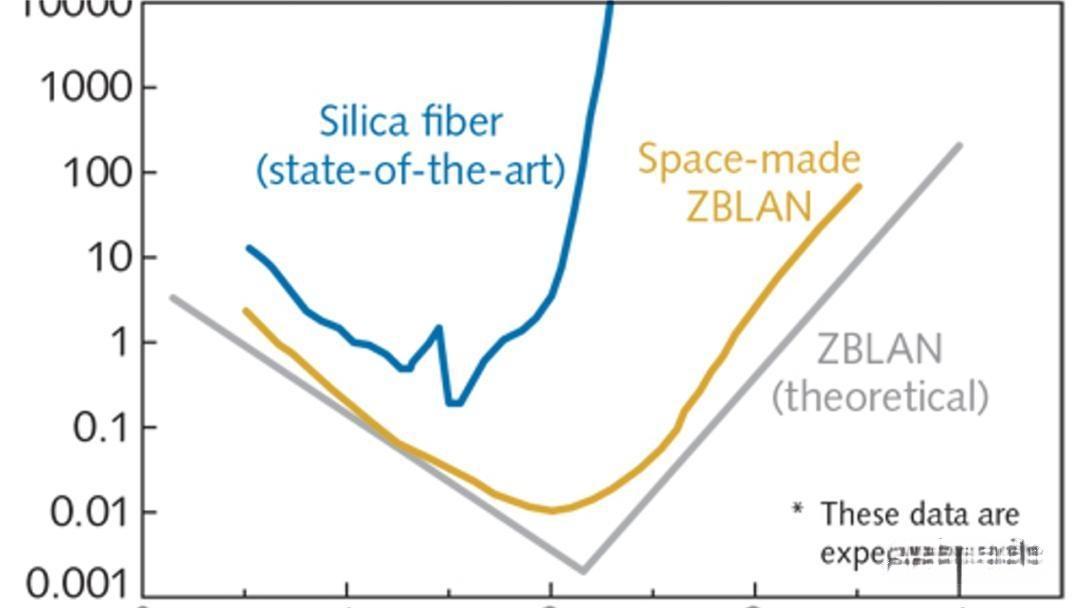The long and short band spectra of quartz glass (SiO2) are limited by two factors: if too close to the ultraviolet light, it will be absorbed by the bound electrons; the infrared light will be absorbed by the vibrational mode of the Si-O network. Finding a glass with a very good light transmittance was a very popular research direction in the 1980s. To transmit information to optical networks over longer distances.
The attenuation of quartz glass fiber reaches a low wavelength of 1.55 μ m (mature products can reach 0.16dB / km, and now there is still a record of 0.12dB / km). According to this data, 80 km to maintain about 20% of the energy transmission. A V-shaped attenuation curve (yellow quartz glass curve and red fluoride ZBLAN glass fiber) shows the exact value of light loss and wavelength.

Attenuation curve and wavelength relationship of silica glass fiber and fluoride glass fiber
An alternative to quartz fiberglass is, ZrF4 based on fluoride glass. In the region of the UV spectrum, the light conduction situation is similar, but in the infrared region, it is quite different. The vibration mode (vibration mode) of Zr-F is much lower than that of Si-O, as can be seen from this V-shaped diagram, the ZBLAN glass has a deeper (lower decay) curve, corresponding to a minimum loss about 100 times lower than that of Si-O. The lowest attenuation region occurs at a longer wavelength (λ = 2.5 μ m). If successful, it means that fiber communication without repeater may exceed hundreds of kilometers.
However, this is theoretical data, and in practice, this goal is not achieved because impurities such as transition metals (transition metals, even with ppb content) and-OH cannot be completely avoided. On the other hand, the optically transparent properties of the fluoride glass are still present. It seems that the real difficulty is the purification scheme.

Quartz glass and the ZBLAN glass prepared in space
The complex composition of 60ZrF4,20BaF2,4LaF3,6AlF3 and 10NaF (the acronym of ZBLAN) has the most stable state (not easy to crystallization), suitable for fiber stretching (the so-called soft glass is afraid of crystallization in the process of drawing). The polyhedra forming glass are ZrF7, AlF6 and LaF8, while Ba2 + and Na + act as modiagents. This glass contains rare earths (RE) as a natural component (natural constituent), which enables the rapid development of optical amplifiers or fiber lasers because ZBLAN materials are easier to doping various types of rare earths and have more usable wavelengths (more emission lines than silica glass) than quartz glass.
In the development of ZBLAN, at the same period, chemical vapor deposition process (CVD) was invented, is still in use, this technology to quartz fiber development has made great progress, industrial also reached the final optical and mechanical properties.